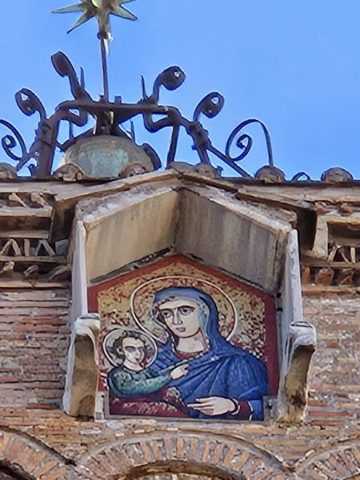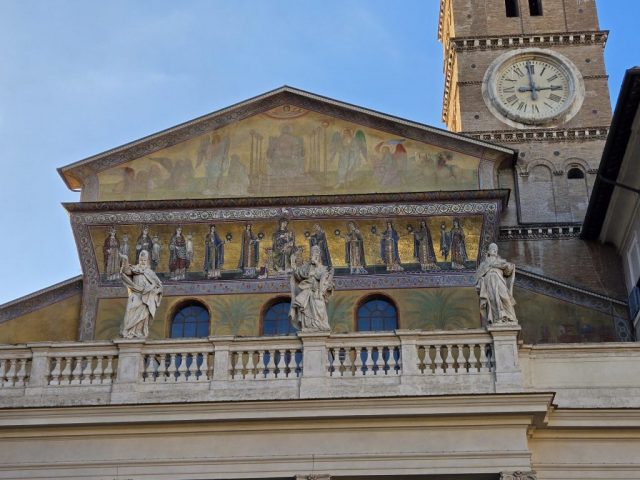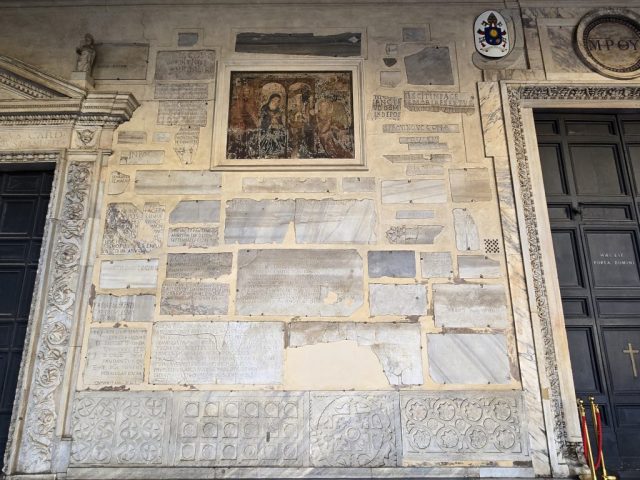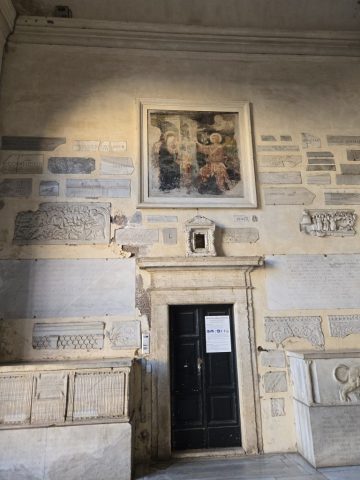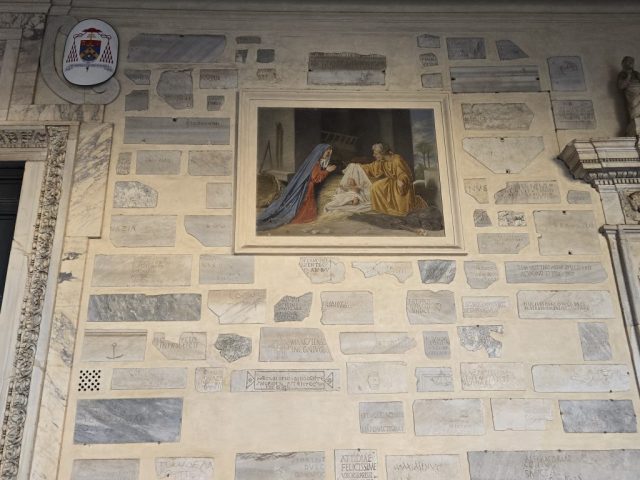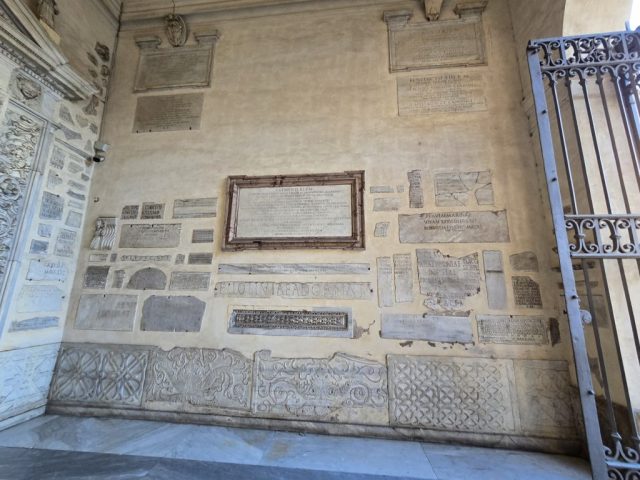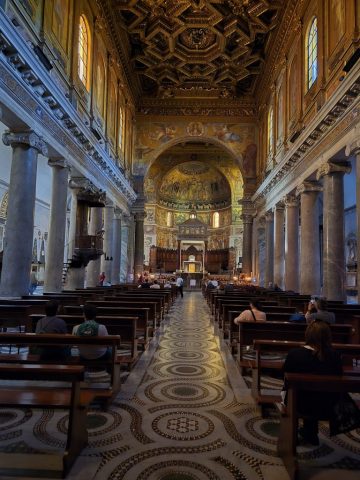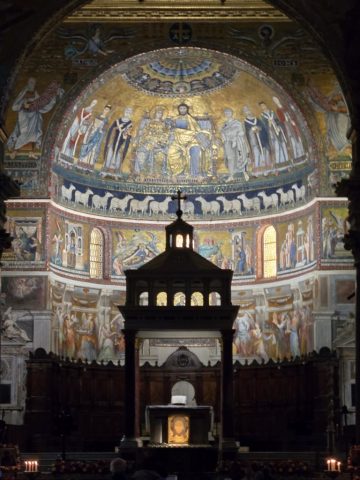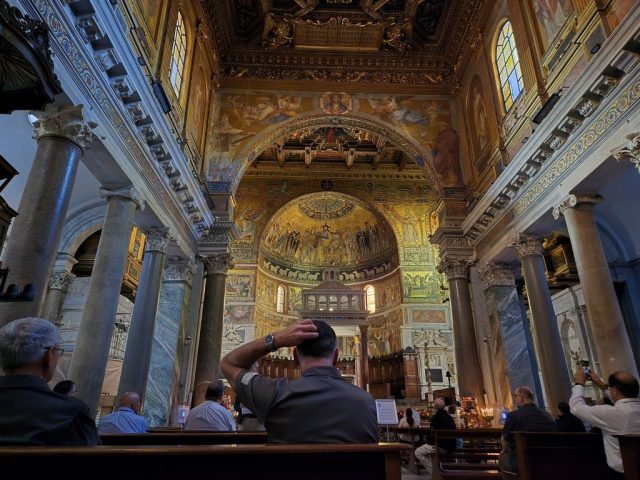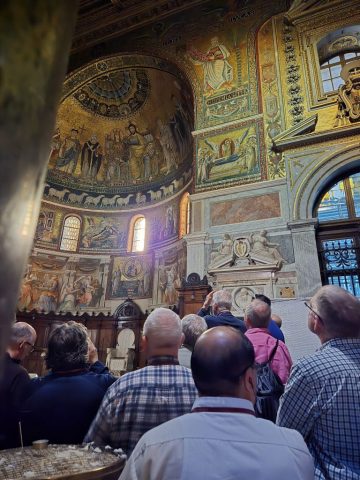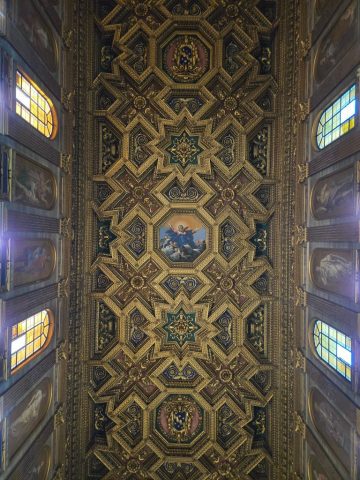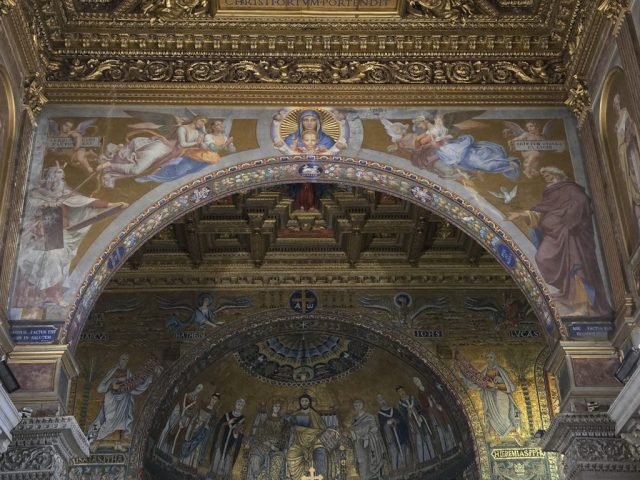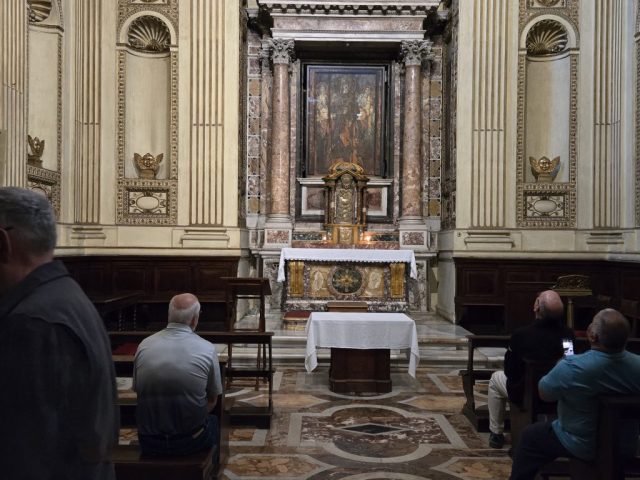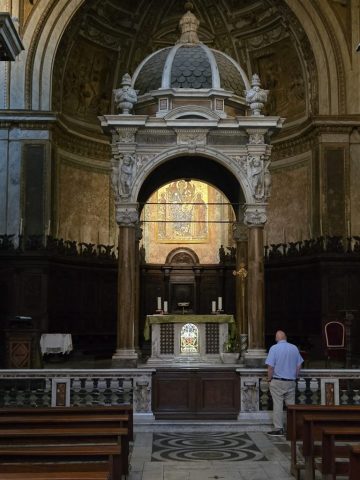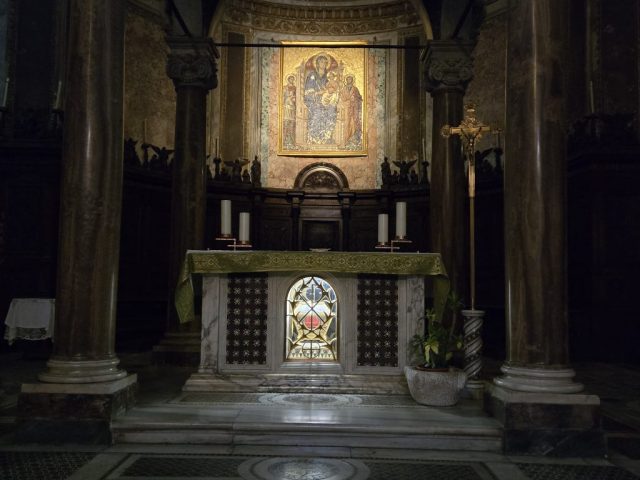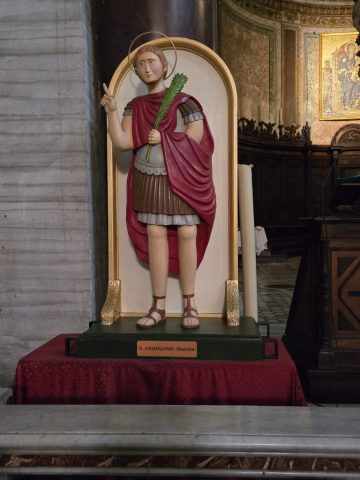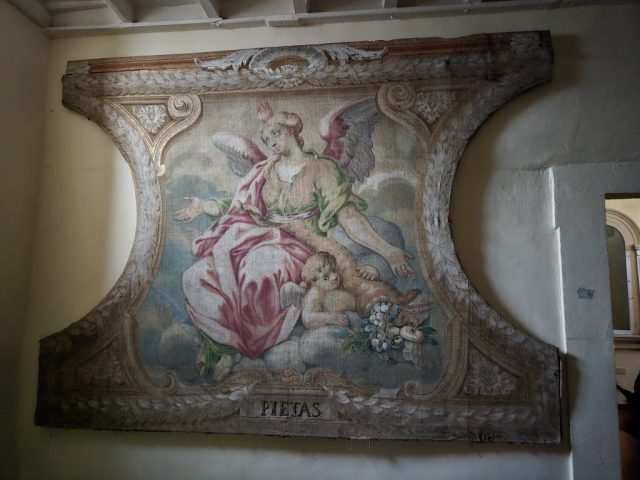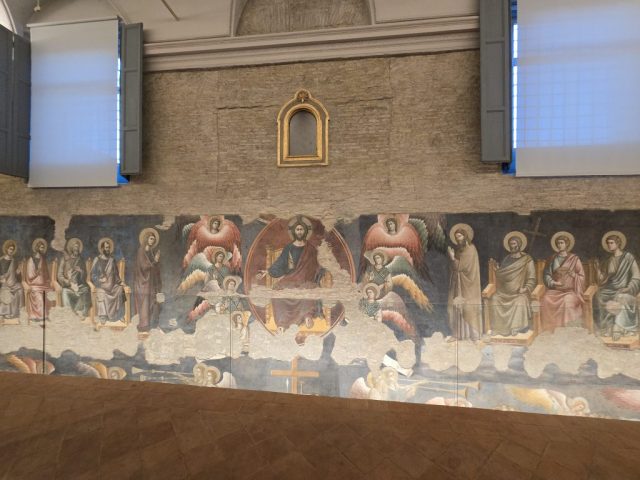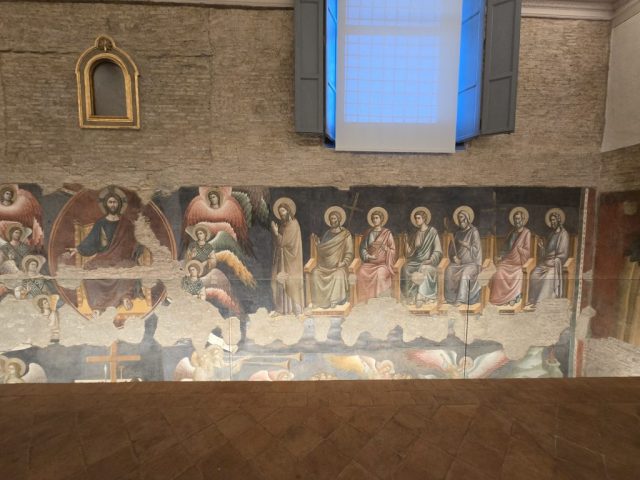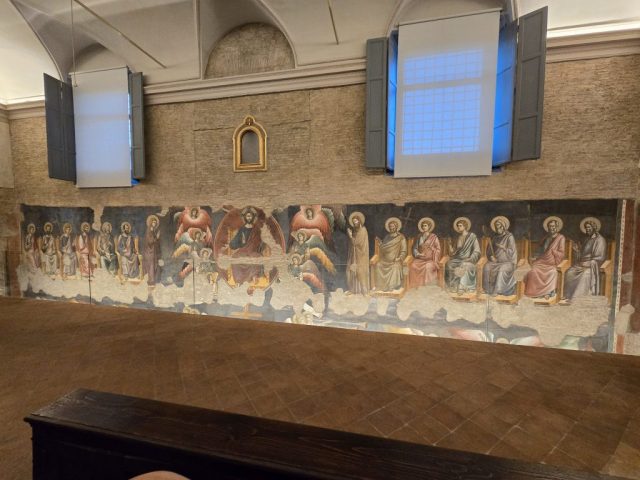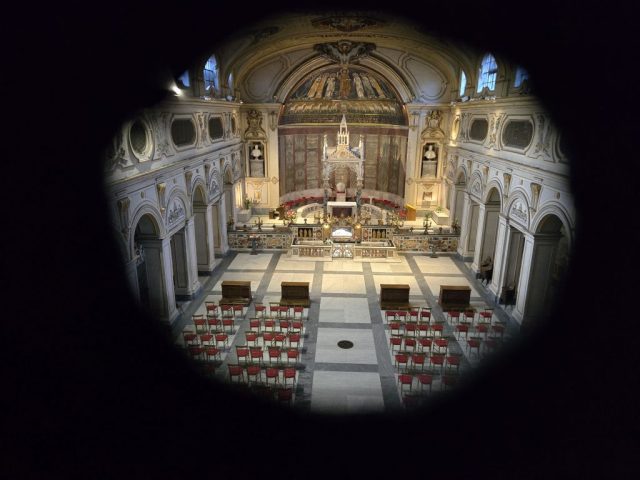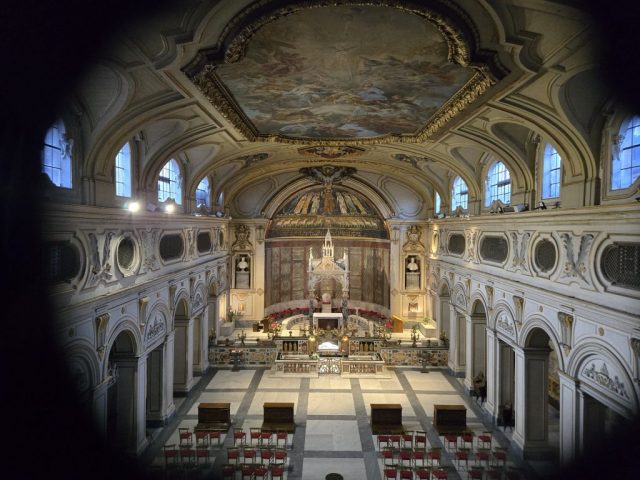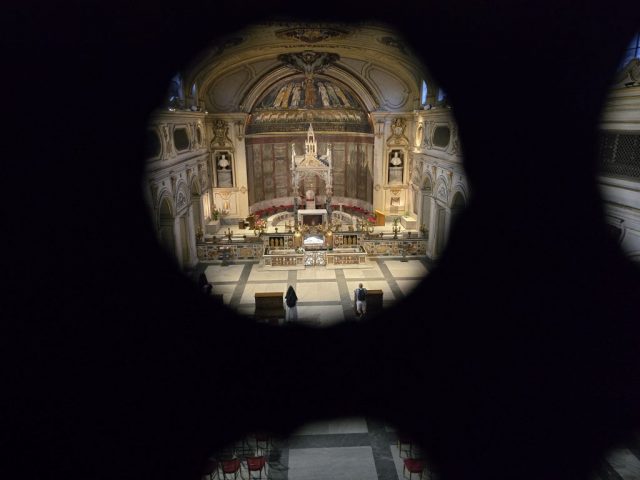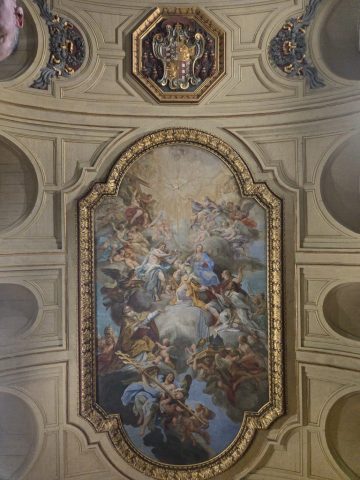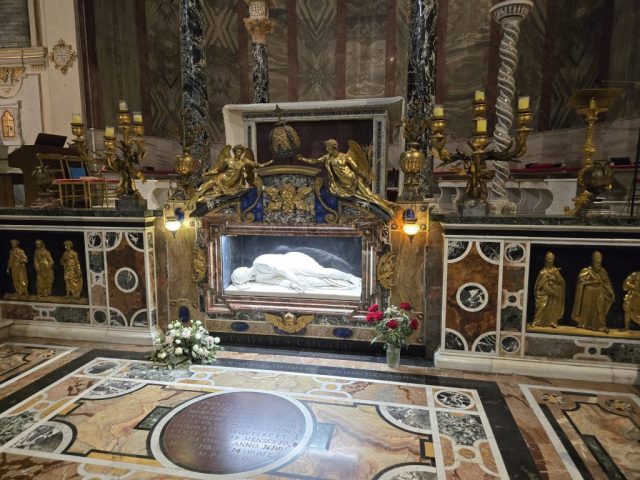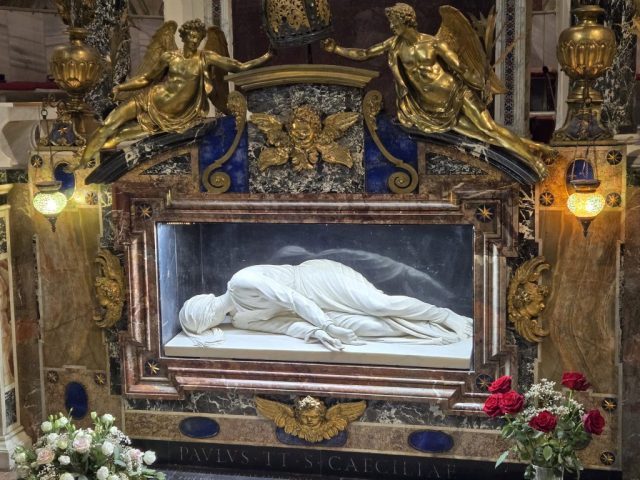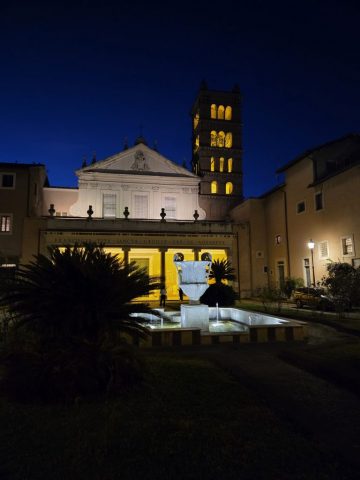Trestevere
Santa Maria in TrestevereSanta Maria began as a sanctuary built for Rome’s first Christian community. It began in the dark days of persecutions as a house church used by the first Roman converts from the Jewish faith (note: Trestevere was originally a Jewish area of Rome that housed merchants and craftsmen, mostly foreigners). The Trestevere district was located just across the Tiber river from the Jewish District; the early Romans referred to it as “Trans Tyberim”—which, literally, means: “Across the Tiber.” St. Paul’s evangelization (61-65 AD) also found fertile ground among the lower-class culturally diverse Tresteverini. It was in Trastevere that imperial guards hunted down most of their Christian victims for martyrdom in the Roman arenas. It was also from Trastevere that most Christian families traveled secretly to bury their dead in catacombs along the Appian Way. Aside from being the oldest place of public worship in Rome, St. Maria is also the oldest church dedicated to the Virgin Mary. In fact, legend associates it with the birth of Christ! Tradition links the dedication to Mary to the miraculous source of a fountain of mineral oil that was later interpreted by Christians as a sign auguring the birth of Christ. The oil flowed 38 years before the birth of Christ and it ran all the way to the Tiber. Modern scientists investigating the case have found that a small volcanic eruption could have caused such a flow. St. Jerome wrote in the 4th century that the Jewish community of that time had interpreted it as a sign that God’s grace would soon flow into the world. The first Christians recall the miraculous flowing as a prophecy of Christ’s birth and established an early meeting place on the sacred spot. An inscription near the apse marks the spot where the miracle is said to have occurred. By the 4th century we have records for the construction of a large church dedicated to the Virgin Mary by Pope Julius I (337-52) and the building appears in a list of titular churches compiled by the Council of 499. It was in the 12th century that Marian devotion really spread throughout Europe and S. Maria’s mosaics have a special place in the history of Marian devotion. They are considered the first example of the “glorification” of the Virgin in which Mary is shown as a youthful and queenly spouse – rather than as a Madonna with child. Note that she is enthroned on equal footing with Christ the King. On Mary’s right are St. Calixtus, St. Lawrence and Pope Innocent II holding a model of the church. To Christ’s left are St. Peter, St. Cornelius, Pope Julius I and St. Calepodius. The facade is by Carlo Fontana (1702). Over the portal note the 4 baroque statues of S. Maria’s favorite saints: Calixtus, Cornelius, Pope Julius and Calepodius (All their relics are beneath the main altar inside!). St. Chrysogonus in TrestevereThis church, dedicated to St. Chrysogonus, a 3rd-century Christian martyr saint, has a long and fascinating history and is a remarkable example of Roman religious architecture. The Church of St. Chrysogon, was one of the first twenty-five parishes in Rome. It was first built in the fourth century over the home of Saint Chrysogonus. The church was enlarged in the twelfth century and finally rebuilt again in the seventeenth century. Saint Chrysogonus was a Roman military officer condemned to die during the Diocletian persecutions. Even after he was imprisoned, he was able to offer spiritual direction to Saint Anastasia by her writing letters. He was eventually beheaded and thrown into the sea. His body was recovered and buried. St. Cecilia in TrestevereIn the heart of Trestevere, this church has been known as one of the cities most important shrines since at least 499. Santa Cecilia is remembered as a married woman (of the Cecilii lineage) who was martyred in the first half of the 3rd century with her husband (Valerian), her brother-in-law (Tiburius), and an instantly converted onlooker (Maximus). A place of worship was set up by the 5th century and a basilica erected by Paschal (817-824) (Pope Paschal I rebuilt the edifice as a basilica in 821 to safeguard the saint’s body which was recovered intact in the catacombs of S. Callisto.). The present structure dates to 1599. Cecilia was sentenced to die by asphyxiation inside her own family caldarium; a steamroom. After surviving for three days in the steam, she was stabbed to death and beheaded. In 1599 her sarcophagus was opened for inspection with the sculptor Carlo Maderno (1556-1629) as an onlooker. He carved what he saw – now located beneath the main altar (turned on one side, the face turned down, and three of the fingers extended which was taken to allude to the Trinity). The caldarium is used as a chapel. Still to be seen are the vents through which heated air came. On view in the crypt are sarcophagi containing the remains of Cecilia and her three fellow martyrs. Beside them are the tombs of two early popes: Sts. Urban (222-239) and Lucius (253-254). St. Cecilia is the patroness of music and musicians since the 5th century. Accounts of her martyrdom speak of how she “sang within heart to God alone” during her wedding ceremony seemingly oblivious to the cantantibus organis, the “singing” of the musical instruments. A curious misreading of the Latin caused a widespread belief in the 15th century that she played the organ! (See the ceiling painting in the pics below). Of very special interest in the apse is a 9th century Byzantine mosaic of Christ, Cecilia, Valerian (her chaste spouse), and others, including Pope Paschal, who is shown with a square halo (living at the time of the art). In the nun’s choir in the adjoining convent is a Last Judgment by Pietro Cavallini, a masterpiece of 1293. |
Clicking an image opens the photo-viewer |

